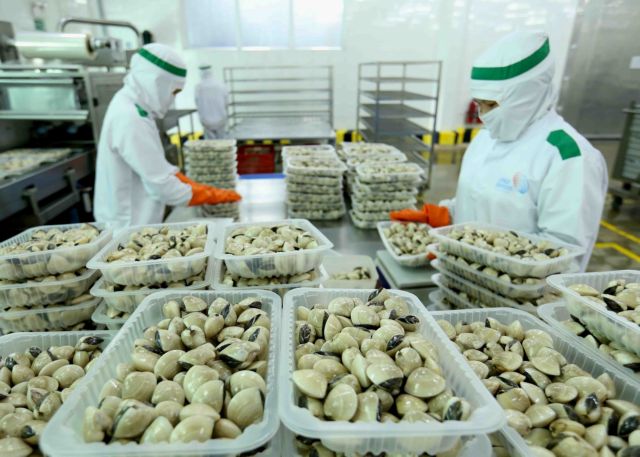 Economy
Economy

Controlling the pandemic appropriately and "opening up" the economy are the most important premise to promote exports and growth. Huge opportunities and potential for exports and growth are already there so it is necessary for companies to exert themselves.

|
Võ Trí Thành*
The COVID-19 pandemic – a global catastrophe that has swept through most countries in the world – has had a disastrous impact on the entire socio-economic life of mankind. Việt Nam is no exception, but the country’s situation is quite different from the rest of the world.
Việt Nam's economic growth rate reached merely 2.9 per cent in 2020, which was a low level since the country started its Đổi Mới (Renewal) process, but still a bright spot as the world economy has been facing a severe recession with a growth rate of -4 per cent.
From the end of the third quarter (Q3) of 2020 to Q2 of 2021, Việt Nam's economy recovered clearly with growth rate of 5.6 per cent in the first half of 2021. However, in the third quarter of 2021, the pandemic caused an economic fallout with GDP contracting by 6.2 per cent.
Overall, GDP in the first nine months of 2021 only increased by 1.4 per cent and is likely to rise only 2.5-3.0 per cent for the whole year – contradictory to projections of the recovery of the world economy which is forecasted to have a growth rate of about 5-6 per cent.
So what was the driving force for the country’s economic growth from Q3/2020 to Q2/2021 and will the economy be able to keep that momentum to catch up with the world economic recovery in the future?
Breaking down factors contributing to aggregate demand, we see that in the first six months of 2021, while there was a sharp decrease in consumption and a standstill in investment, the exportation of commodities and services experienced strong growth of 24 per cent.
However, in the third quarter of 2021, the COVID-19 outbreak loomed largest, gravely wounding the economy. GDP declined by 6.2 per cent – the biggest drop since Việt Nam began publishing its quarterly GDP. In that period, final consumption fell by 2.8 per cent but the exports of goods and services still rose by 2.5 per cent.

|
| Packaging clams at the Lenger Seafoods Vietnam Company for export, including the EU. The EU market was Việt Nam's third largest market with US$9.9 billion in the third quarter of this year. VNA/VNS Photo |
For a more in-depth look, it is necessary to analyse Việt Nam's exports to its main markets. Moreover, Việt Nam is inherently a country that has the advantage of exporting goods, not exporting services – which always has a large deficit compared to services imports. Therefore, it is also necessary to consider the separation of exports of goods and exports of services.
In the first six months of 2021, the export of goods reached over US$157.6 billion, up 28.4 per cent compared to the same period last year. Meanwhile, exports of services in the period posted revenue of $1.8 billion, plummeting by 68.5 per cent, caused mainly by the tumbling of tourism and transport services.
The United States is Việt Nam's largest export market with a turnover of $44.9 billion, up 42.6 per cent, followed by China ($24.4 billion, up 24 per cent); EU ($19.3 billion, up 17.4 per cent); ASEAN market ($13.8 billion, up 26.0 per cent); South Korea ($10.5 billion, up 14.7 per cent); and Japan ($9.9 billion, up 6.9 per cent).
It is worth mentioning that the EU-Vietnam Free Trade Agreement (EVFTA), since taking effect in August 2020, has contributed considerably to the exportation of Vietnamese goods. In the whole year of 2020, the export turnover of goods increased by 5.1 per cent despite the fact that it decreased by 11.0 per cent in the first half of the year.
This means that taking advantage of FTAs, especially the EVFTA, has helped boost the growth in goods exports in 2020 and in the first half of 2021. The achievements in exports would have been maintained for the whole year if the country did not have to impose strict lockdowns to deal with the fourth wave of COVID-19.
Since the end of April of 2021, like other countries in the world, Việt Nam has faced many difficulties such as the scarcity of raw materials and production inputs, rising prices, and high logistic costs. But a look at the data shows that the decline in economic growth and the components of aggregate demand in the third quarter of 2021 was basically attributable to the internal situation of Việt Nam.
The country had been quite successful in fighting three waves of coronavirus outbreaks from the beginning of 2020 to March 2021. But the result was different when the pandemic broke out for the fourth time at the end of April 2021, hitting big cities, and economic and industrial production hubs of Việt Nam such as Bắc Ninh, Bắc Giang, HCM City and the southeast provinces and even Hà Nội.
The strict social distancing policy, lasting for many months in epicentres, has created unprecedented difficulties for production and business activities, and has been reflected in the figures of GDP growth as well as export earnings in the third quarter of 2021.
Specifically, from July to September 2021, goods exports fetched a turnover of $83.9 billion, decreasing by 2.8 per cent year-on-year. Services exports turnover dropped by 10.8 per cent to $0.9 billion.
The United States continued to be Việt Nam’s largest export market with a turnover of $24.9 billion, up only 1.6 per cent. China came second with $14.1 billion, up 13.7 per cent. EU market ranked third with $9.9 billion, down 4.4 per cent.
And although exports to the US and EU decreased significantly, in the first nine months of 2021, Việt Nam still had a trade surplus with the US and EU.
In general, in the first six months of the year, commodity exports still kept pace with the economic recovery of main partners, especially the US, EU and China. Even the domestic business sector has taken advantage of the recovery opportunity.
When the pandemic broke out for the fourth time, market flexibility partly helped limit negative impacts of the pandemic on production, business and export of goods. Trade of goods still contributed greatly to the economy’s ability to resist the COVID-19’s heavy influence. Trade in services is increasingly important to the country. However, dampened exports of services, especially tourism and transport, further widened the trade deficit and hampered economic growth.
Controlling the pandemic appropriately and "opening up" the economy are the most important premises to promote exports and growth. Huge opportunities and potential for exports and growth are already there so it is necessary for companies to exert themselves.
However, because businesses, especially domestic ones, have lost their strength due to long social distancing, sufficient and drastic support for them to overcome difficulties in the immediate period and even restructure with future-forward vision is indispensable. Hopefully, we will soon regain the exports momentum to make a strong economic recovery in 2022 and the following years. — VNS
*Võ Trí Thành is a former vice-president of the Central Institute for Economic Management (CIEM) and a member of the National Financial and Monetary Policy Advisory Council. The holder of a doctorate in economics from the Australian National University, Thành mainly undertakes research and provides consultation on issues related to macroeconomic policies, trade liberalisation and international economic integration. Other areas of interest include institutional reforms and financial systems.